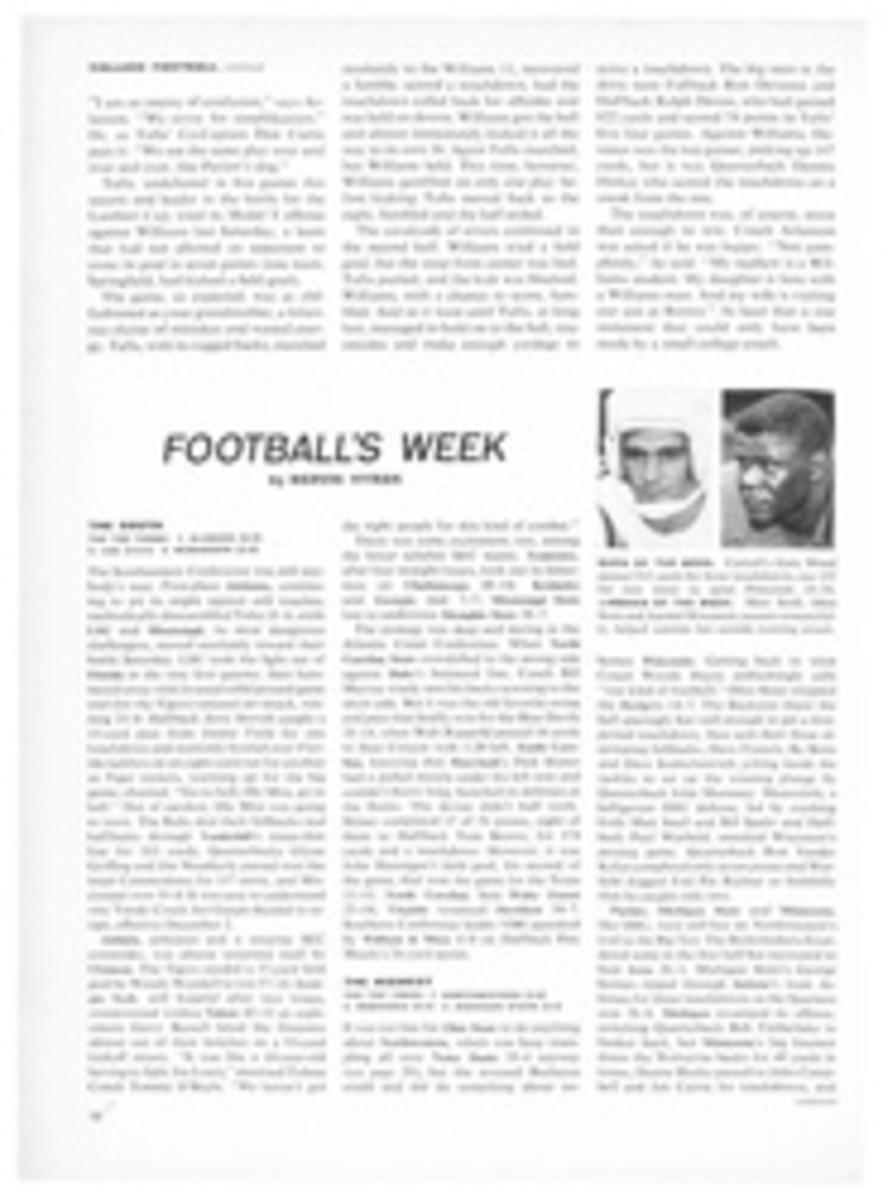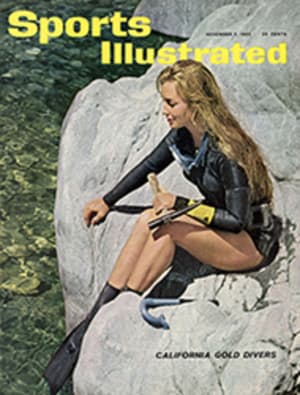
A Mexican hairless bites two blonds
The sweet smell of Mexico City—a potpourri of mimosa, diesel exhaust and harsh tobacco smoke—is wafted on the thinnest air of any major city in the world. At its 7,400-foot altitude a normal man breathes four more times a minute than he does at sea level, and he can get giddy running after a bus—or a tennis ball. With this in mind, members of the Swedish Davis Cup team, and their Mexican counterparts as well, spent a month cautiously conditioning themselves for the interzone matches held here last weekend—matches that would send one or the other nation against India for the interzone finals and thence to Australia for the cup itself.
Before jetting into Mexico City a month ago, Sweden's hay-haired pair, Jan Erik Lundquist and Ulf Schmidt, who upset favored Italy in July to become the European zone champions, spent some preconditioning time in the U.S. "mile-high" city of Denver. At the same time Mexico's own cuppers, Rafael Osuna, who once shaved his head bald as an eagle and has been nicknamed "Pelón" (hairless) ever since, and Antonio Palafox, came back home from California to begin practice with special high-altitude balls. These hard, heavy, deadish balls make for a different kind of game. "Closer to table tennis," snorted Sweden's non-playing captain, Mats Hasselquist. "You don't hit the ball, you control it."
Mexico's 24-year-old Osuna is a genius at that kind of game and is the highest-ranked (No. 8) international player in Mexican tennis history. His less spectacular partner and teammate, Palafox, has a better all-round game, but he lacks Osuna's fire. Palafox, who is called "Potrillo" (the colt), is by turns quiet and incendiary. Disturbed, he will slam the ball savagely into a backstop, but in calmer moments his precise placement is one of the delights of the amateur game. "He's the best tennis player we've got," says Pancho Contreras, the Mexican cup captain. But as a weekend player who achieved Davis Cup stature almost in spite of himself, he is only now beginning to share others' opinion of his skill. "Now that I'm going to a university," he says, meaning Texas' Corpus Christi, "I'm beginning to gain confidence."
In the opening day of the current matches, before a huge and partisan crowd at the city's Chapultepec Sports Center, this diffident Mexican was matched against a young Swede as different from him as mountain top from sea level. Jan Erik Lundquist was a child prodigy of Swedish tennis. He hadn't lost a Davis Cup singles match in three years, and he is now confidently embarking on a second career as sports-writer for the Stockholm Aftonbladet. In Mexico City he had other things besides tennis to occupy him. Athletes from 16 countries were there to compete in the XI World Modern Pentathlon Championships, and Sportswriter Lundquist was writing a feature story on the Swedish team (it finished sixth).
The night before his match with Palafox, Lundquist stayed up until nearly dawn listening to mariachi music. Next day, either because or in spite of this saucy sample of gamesmanship, he unleashed his overpowering service to vanquish uncertain young Palafox 8-6, 1-6, 8-6, 6-4, giving Sweden a momentary and unexpected lead in the tie. In the following match Rafael Osuna evened things up by defeating versatile but sluggish Ulf Schmidt in a contest that threatened for an angry moment to become an international incident. With the sun sinking fast and Osuna leading two sets to one and 4-1 in the fourth set (only two games away from a victory), the Swedish captain invoked an international tennis federation curfew that suspends all Davis Cup play at 5:30 p.m. The Mexican stalked off the court in a fury. "If you can't see the ball, why don't you wear glasses," he muttered. The following morning the sun was high again, and Osuna cleaned the match up in three games.
Serve and come
By the time the doubles came along, both Osuna and Palafox had managed to catch their breath as well as regain their composure. In the early singles each had clamped an oxygen mask against his face for frequent brief whiffs of energy. In the doubles they merely sipped water. Osuna and Palafox probably are the best doubles team in the world outside of Australia: they have played together for five years and are the current U.S. champions. "We concentrate mainly on doubles," said Captain Contreras. "It's the key point in Davis Cup play." But it seemed for a while that the point might be lost. With tall Lundquist's blazing service supported by Schmidt's solid backing, the Scandinavians won the first doubles set 8-6, and Mexico City's large Swedish colony grew loud with hope. Then, with Osuna muttering a sort of war chant ("Serve and come, serve and come"), and following suit, the Mexicans regained their form and the hope faded. Lundquist beganhitting into the net, Schmidt hitting long.
Over the next three sets, little Hairless and The Colt played some of the best tennis of their career to win the key match of the tie.
In the first second-round singles match Ulf Schmidt's steady pressuring prevailed against Palafox 11-9, 3-6, 6-3, 1-6, 6-1 to bring the matches even once again. But in a tense five-set final match Osuna, whose will to win is often as explosively spectacular as his tennis, unleashed his flashiest fireworks to beat self-confident Lundquist 3-6, 6-4, 6-3, 1-6, 6-3 and (barring upsets in India) assure Mexico a place beside the U.S., Britain and France as a tennis nation fit to challenge Australia. As the match ended, a shower of green cushions hurtled out of the grandstand and an impromptu cheer rose from 3,500 throats to mingle with the mimosa scent and diesel fumes:
A la bio, a la bao
A la bim-bom-ba
Pelón, Pelón,
Rah rah rah.
PHOTO
SWEDEN'S LUNDQUIST IS A SPORTSWRITER WHO MAKES HIS OWN NEWS

